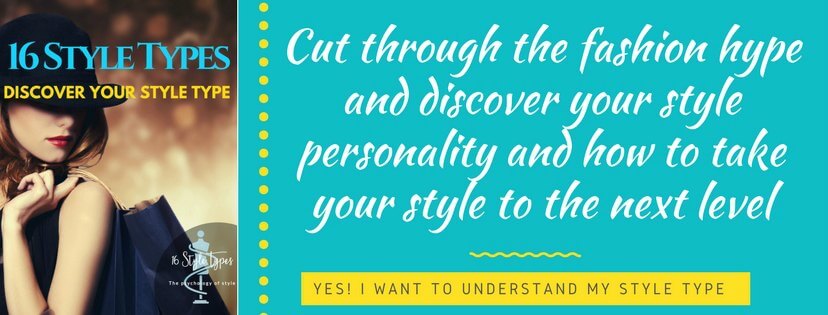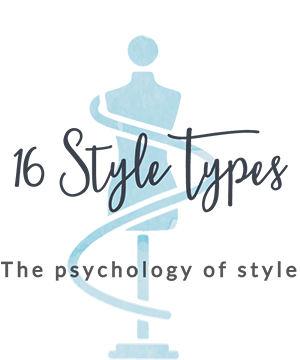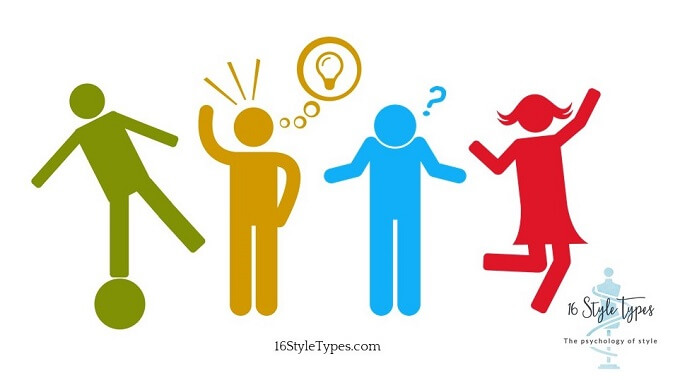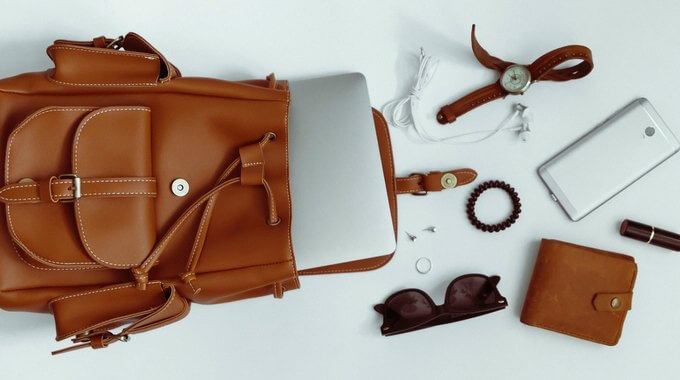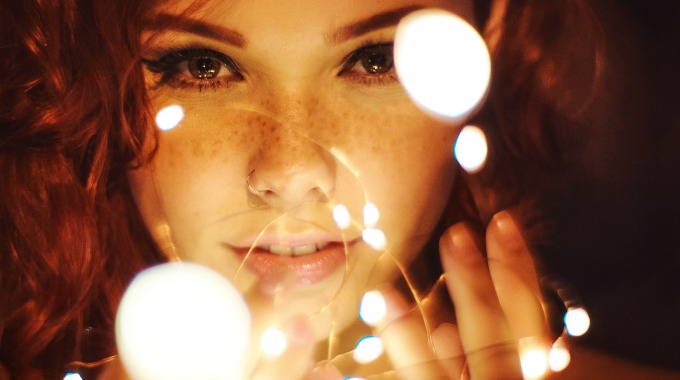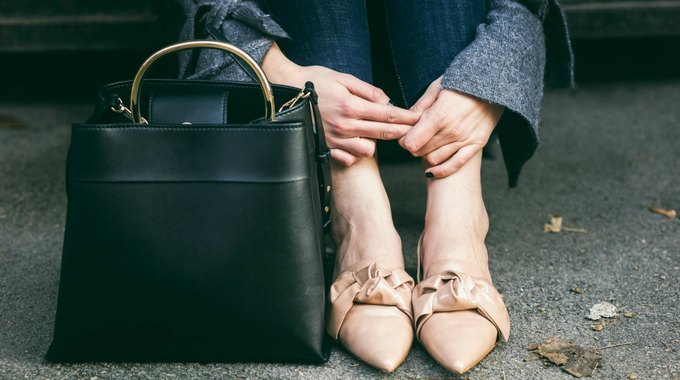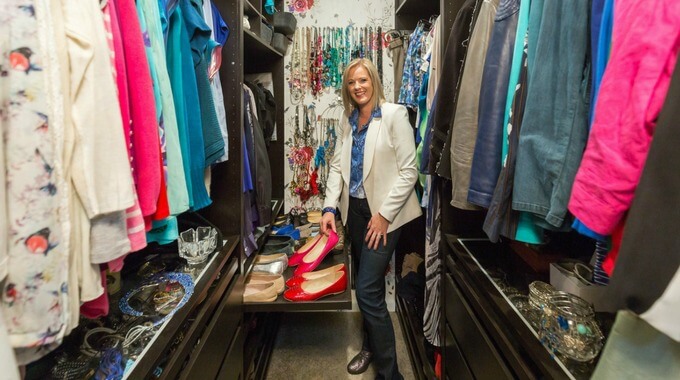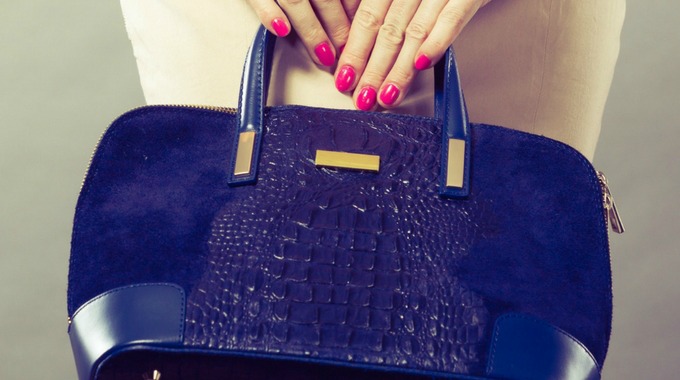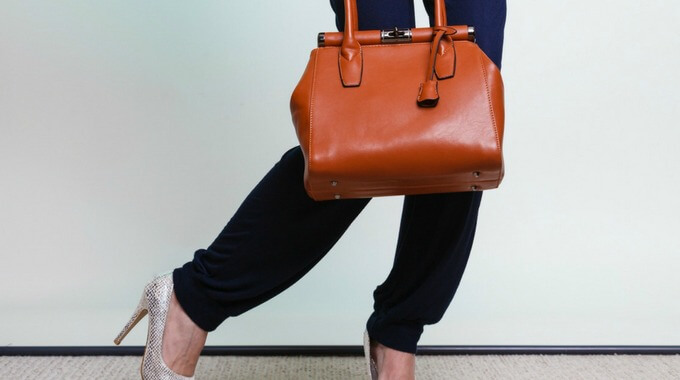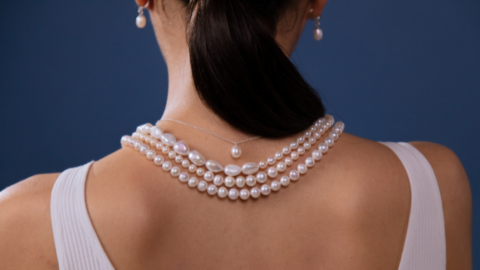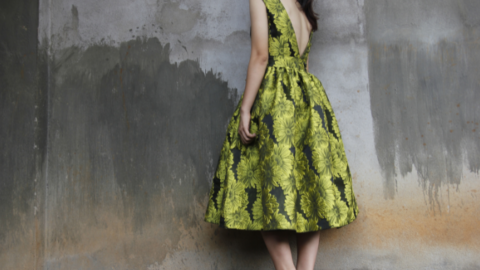One of the magnificent things about the model of personality we have linked style to, Psychological Type, is how multi-dimensional and sophisticated it is.
For people concerned with being pidgeon-holed and stereotyped, when Type is used as intended, it’s a magnificent tool for shining a beautiful light of awareness on legitimate differences.
It can be life-changing when people finally come home to themselves — truly, deeply, confidently — and claim their innate preferences, sometimes for the very first time in their lives. Ah – to know that there is nothing wrong with you, that you are not flawed or defective – you’re just you!
Type is Dynamic
One of the ways that Type offers this richness and depth is due to its dynamic nature.
If you’re new to the idea of the dynamic nature of Type then take a moment now to read this piece on why you are not the sum of your letters. This piece will also tell you what your dominant (or leading) function is, according to this theory. You might find that useful as you continue reading this article.
One of the leading lights in the development of Type is Isabel Myers (yes the M in Myers Briggs Type Indicator®, or the MBTI®). In this article, we’re sharing some of her ideas about how Type can be used in powerful yet simple ways.
What’s Your Best Process?
Isabel Myers understood very well the dynamic nature of Type – it formed the very foundations of her work in developing the MBTI®, and guided her work with others seeking to learn about this theory of human psychology.
Isabel believed you need to understand your “best process” — your dominant function — to truly understand yourself.
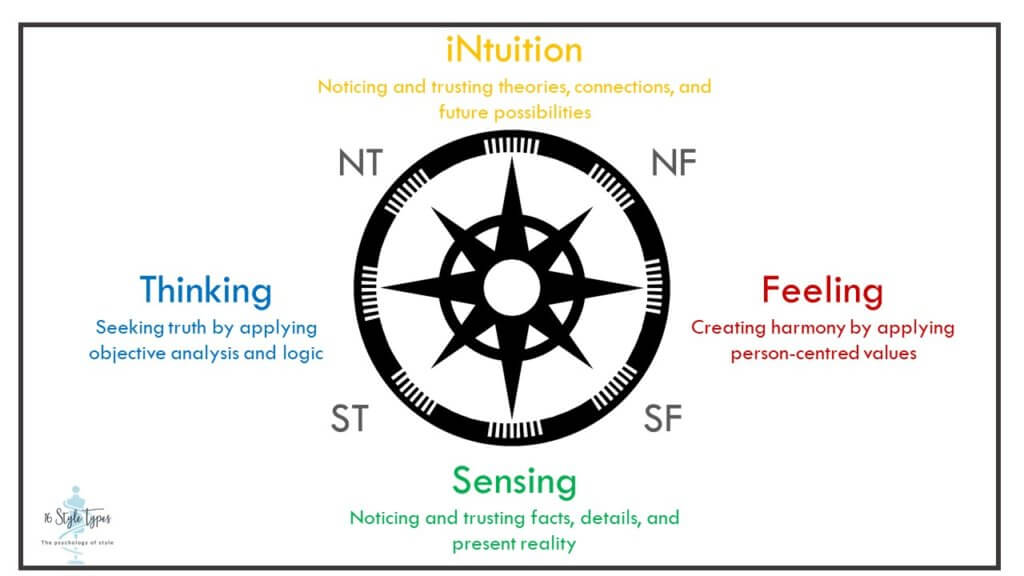
Isabel Myers encouraged an understanding and claiming of your best process – your dominant function – of either Sensing, iNtuition, Thinking, or Feeling
The processes she is referring to are: Sensing, iNtuition, Thinking, and Feeling. One of these will be your “best”.
In her own words:
[Use] all four processes on a problem. But that doesn’t mean they all have equal standing with you – equal authority with you. You need to trust your own best process, and you may not always know what that is. One of the ways you can help yourself resolve a doubt in this matter is to try this exercise faithfully: Try the four processes sensing, intuition, thinking, and feeling – and see which of the four is hardest and most distasteful for you to do. The opposite of that one is likely to be your favorite process.
A fascinating way to go about discovering and then exploring your favorite, your best, your dominant function — learn about all four (4), find the one you dislike the most, then look at its opposite. Intriguing!
Even if you already know your best fit Type, this can be an illuminating exercise. Give it a try, see what you see, be open to whatever learning pops up for you in your lifelong discovery of Type.

The Four Rooms
One of the most fun, creative, and helpful ways to consider the four processes (of Sensing, iNtuition, Thinking, Feeling) is as being four rooms in a house.
Each house has these four rooms, but they are arranged differently depending on your particular Type preferences.
- There are four architects for these Type houses: One team is for Sensing (they are the Green Team!)… another is for iNtuition (the Yellow Team!), then there’s the Thinking team (go Blue!), then our Red team – the Feeling designers.
- Each of these design teams approaches the frameworking of the house they’re designing differently.
No house is better or worse designed than any other. Each house is excellent, in their own way.
- There are four design teams for these Type houses. These design teams comprise interior design, furniture styling, landscaping and garden design, and every other aspect of ‘finishing’ the house.
- Again, the teams are Green/Sensing, Yellow/iNtuition, Blue/Thinking, Red/Feeling.
Each design is gorgeous — just in very different ways.
The design of each house is magnificently suited to the occupants.
- Sensing teams create homes that perfectly suit those with a dominant/leading function of Sensing (ISTJ, ISFJ, ESTP, ESFP).
- iNtuition teams have perfected homes that their iNtuitive occupants simply adore spending time in (INTJ, INFJ, ENTP, ENFP)
- Thinking design teams know just what to do to create spaces that Thinking dominant types believe are the best (ISTP, INTP, ESTJ, ENTJ)
- Feeling teams know just the right touches to make dominant Feeling types feel so at home, so special, so nourished (ISFP, INFP, ESFJ, ENFJ)

Your best process (dominant/leading function) can be thought of as being your favorite room in your ideal house. What color is it?
The Colors
The colors used above are deliberate and based on CG Jung’s original thinking that linked elements of the human psyche to different colors. You can look this up (check out the link a little further down the page) if you’re interested to know more about it.
These are not hard and fast assignment of colors to Types, but an interesting element to layer to our exploration of Type. Feel free to experiment with the color for your best process!
Colors have been used in other personality tools such as the Hermann Brain Dominant Instrument®, (or HBDI®) who use green, yellow, red, and blue in a mappable way to the the Type colors in their whole brain approach. Although the assignment of colors to functions differs to the Jungian Type colors, Edward De Bono’s Six Thinking Hats also uses color to designate different contributions.
An in-depth piece on the Jungian colors and how they were developed: The Spectrum of Consciousness
Questions to reflect on
- What is your favorite room? If you know your best process (your dominant/leading function), you know which room it is (remember this piece identifies your leading function).
- Where is your favorite room in your four-room house? If you could draw your house (either by sketching it at a high-level, or blueprinting it in more detail), what would your house look like?
- How is your favorite room decorated? What does it look like? What’s in it? What’s not in it?
- What’s it like to be in it — how does it feel, what do you think when you’re in it?
- Why do you love your favorite room so much?
Who Lives In Your House?
Isabel Myers suggested another intriguing way of looking at and exploring the four functions – thinking of them as occupants of a house.
In her own words:
One way I like to look at the four processes is to see them as four people living under the same roof… So there are four people living under the same roof, and the favorite process is the head of the household – notice, I don’t say “master” of the house. And the auxiliary is the trusted assistant.
What a wonderfully useful way of considering your leading function together with the auxiliary (which we sometimes refer to as the supporting function)!
Questions to ponder
- Who is the head of your household?
- Is the head of your household Sensing, iNtuition, Thinking, or Feeling?
- What do you know about the head of your household? How do they guide your ‘family’? What gifts do they bring?
- If you have explored more about your dynamic type, you may also know about your auxiliary (or supporting) function, your ‘second in charge’. Who supports the head of your household, in the auxiliary position? What contributions do they provide the household, including the psychological balance they bring?
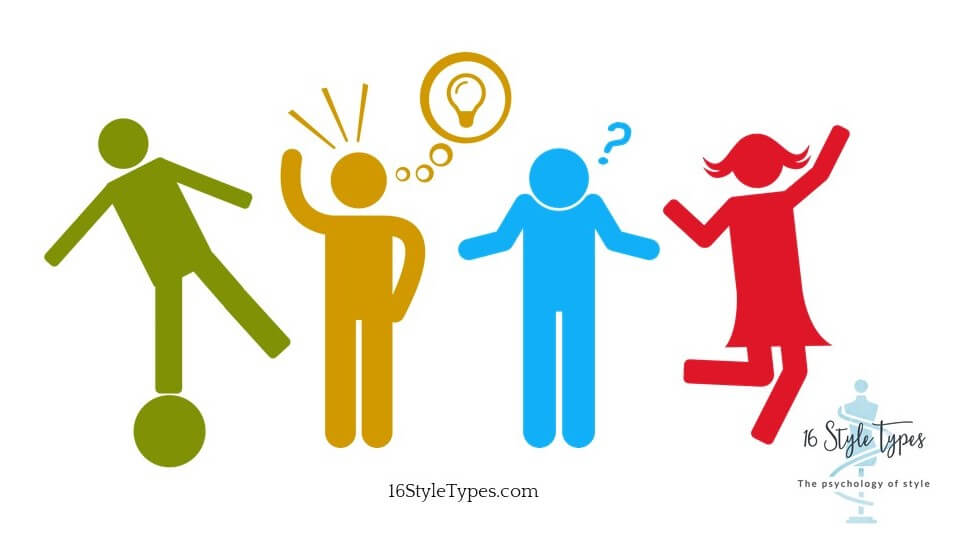
Isabel Myers invites us to consider: Who lives in your house?
Jill’s Household
Using Jill‘s preference for ESFJ as an example, her responses to the above might look like this:
- The head of her household is Feeling, specifically Extraverted Feeling
- Feeling brings a sense of harmony and connection to the household
- Feeling in this particular ESFJ-designed house seeks a deep-rooted life with known parameters and some routine which provides much-needed stability
- Feeling means frequently giving voice to feelings and what’s happening for me right now. Highly sociable, friends are made and rapport is built easily
- The second in command is Sensing, and specifically Introverted Sensing. The second in command brings balance to the head of the household in the arena’s of energy, taking in information (perception), and making decisions (judgment). The way the head of the household and the second in command experience the world differs, too
- Sensing brings details with a highly practical bent. Of greater interest is application (vs theory) and getting things done well, and pleasantly, using past experience as a handrail. Why reinvent the wheel if it’s already working well? Often the end result is very different from the starting point, with an element of artistic design included in often the most mundane of tasks or projects
- Creative without being necessarily original, the overall combination of these two processes at the helm of this household is a sense of friendly, stylish doability and practicality. They get things going with an upbeat energy, encourage others to pursue their unique pathways. They create a welcoming space where details are attended to, there’s pleasure in spending time with others, and a genuine desire to be helpful and supportive to those around them
Imogen’s Household
Using Imogen‘s preference for INTJ as an example, her responses to the above might look like this:
- The head of her household is iNtuition, specifically Introverted iNtuition
- iNtuition brings big-picture future-focused ideas to the household and needs to understand the “why” before getting into any detail
- iNtuition in this particular INTJ-designed house seeks mental challenges and the opportunity to be independent and has an ability to “know” stuff as if via osmosis (and sometimes has a very hard time not tell others “I told you so” after a scenario they predicted plays out)
- iNtuition means frequently taking time alone with thoughts and ideas and to take the time to let those ideas percolate into an answer. Often described by others as intense, possibilities-focus percolates into different ideas to improve on existing concepts
- The second in command is Thinking, and specifically Extraverted Thinking
- Thinking is looking to make the most logically effective decisions, moving ideas forward into an action that takes a complex idea or theory and makes it simple and easy, finding “what works”
- Streamlining processes in a creative sustainable way, the overall combination of these two processes at the helm of this household is a sense of perpetual learning and development, knowing that there is always something more to know. They bring to life effective solutions to problems (for the world and those they love) whilst creating an intellectual space where you can muse about abstract concepts, ideas and the future
Jane’s Household
Jane’s preferences for INFJ as an example lead to different responses, as similar as her Type is to Imogen’s:
- The head of her household is iNtuition, specifically Introverted iNtuition
- iNtuition brings big-picture future-focused ideas to the household and a pull toward engaging the imagination and constant creativity
- iNtuition in this particular INFJ-designed house seeks to creatively solve problems that get in the way of people being all they can be. Like Imogen, though, that drive for independence and the ability to “know” stuff as if via osmosis influence every room
- iNtuition means not knowing where the time goes when letting potential avenues for “teaching the world to sing in perfect harmony” percolate into an answer. While others may scoff at idealism, this drive to make things better often results in changes for one person, a few people, a group or an even bigger impact with research, refining, and eventual partnership with others
- The second in command is Feeling, and specifically Extraverted Feeling
- Feeling for Jane involves considering how a situation, idea, or decision will impact those involved and whether it is consistent with the values she or the community affected espouse as essential
- The overall combination of these two processes at the helm is a striving to improve things for people within one’s sphere of influence through creative problem solving and listening. At the heart of this is ensuring ideas mesh with the bigger values and purposes of groups, communities, families, etc, that flows from the overall combination of iNtuition and Feeling
Exploring Your House… and your Style
When you participate in our online membership program, Your Type of Style, we explore both your dominant and auxiliary functions throughout the 12 Modules, coming to an understanding of how you use both and how they provide psychological balance to you.
When you understand more about your ‘house’ and your ‘people’, you come to a new appreciation for who you are as a person, at your core. You come to understand your gifts and what you contribute to the world. You see your flaws and blind spots in a more charitable light and exercise greater self-kindness as a result.
From such a place of confidence and congruency, you can communicate more generously with others. And you can apply your understanding of Type to so many areas of your life – including your style.
Your Style Type offers you such a rich and rewarding space to express who you are using style, that starts from the inside, from the very foundations of your psychological make-up.
Making the Most of Individual Differences
If you’re interested to read more from Isabel Myers, including the full transcript of the excerpts contained in this article, you can get your own copy of her speech delivered to one of the very early gatherings of Psychological Type enthusiasts and practitioners: Isabel Myers – Making the Most of Individual Gifts.
